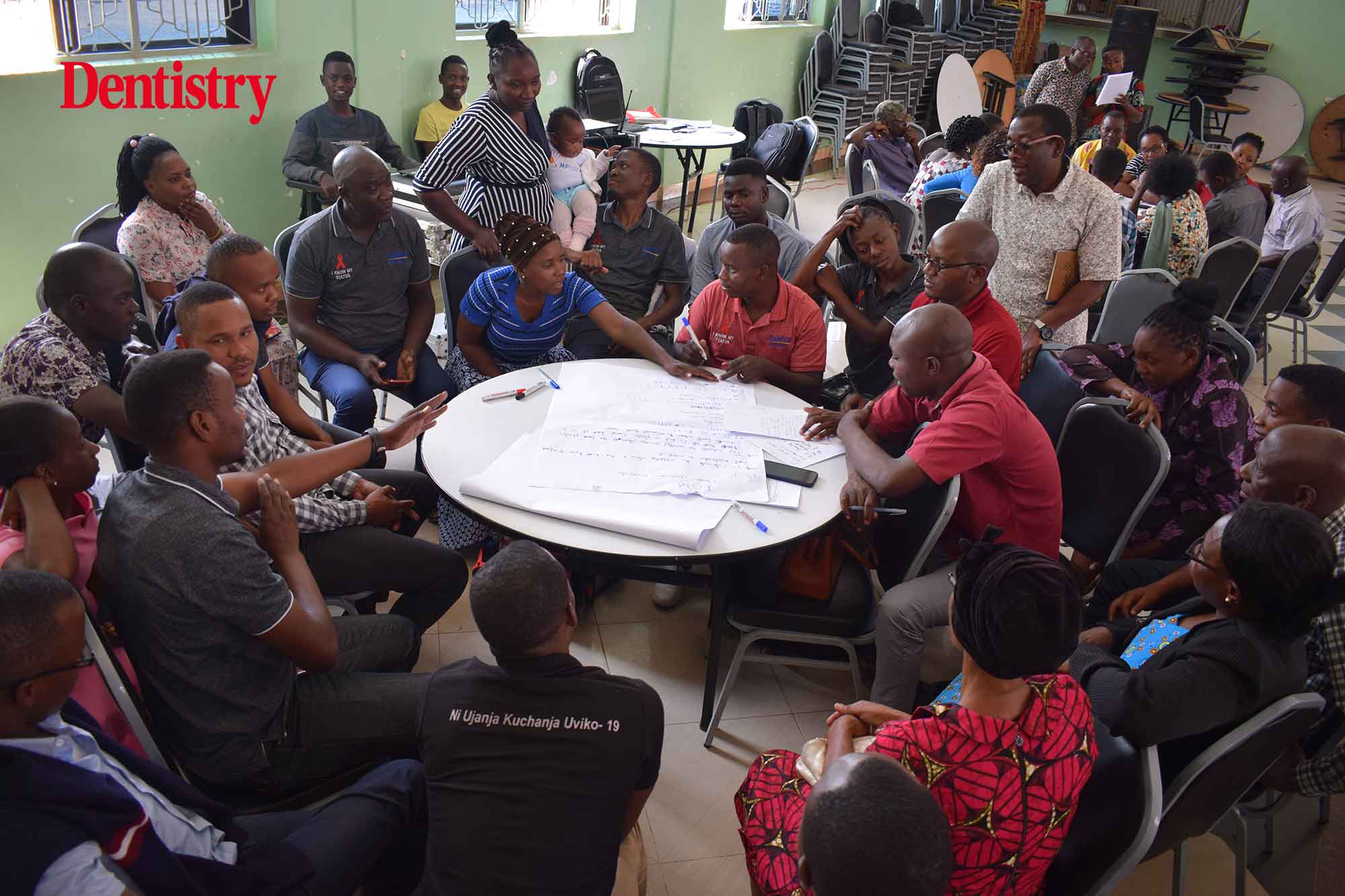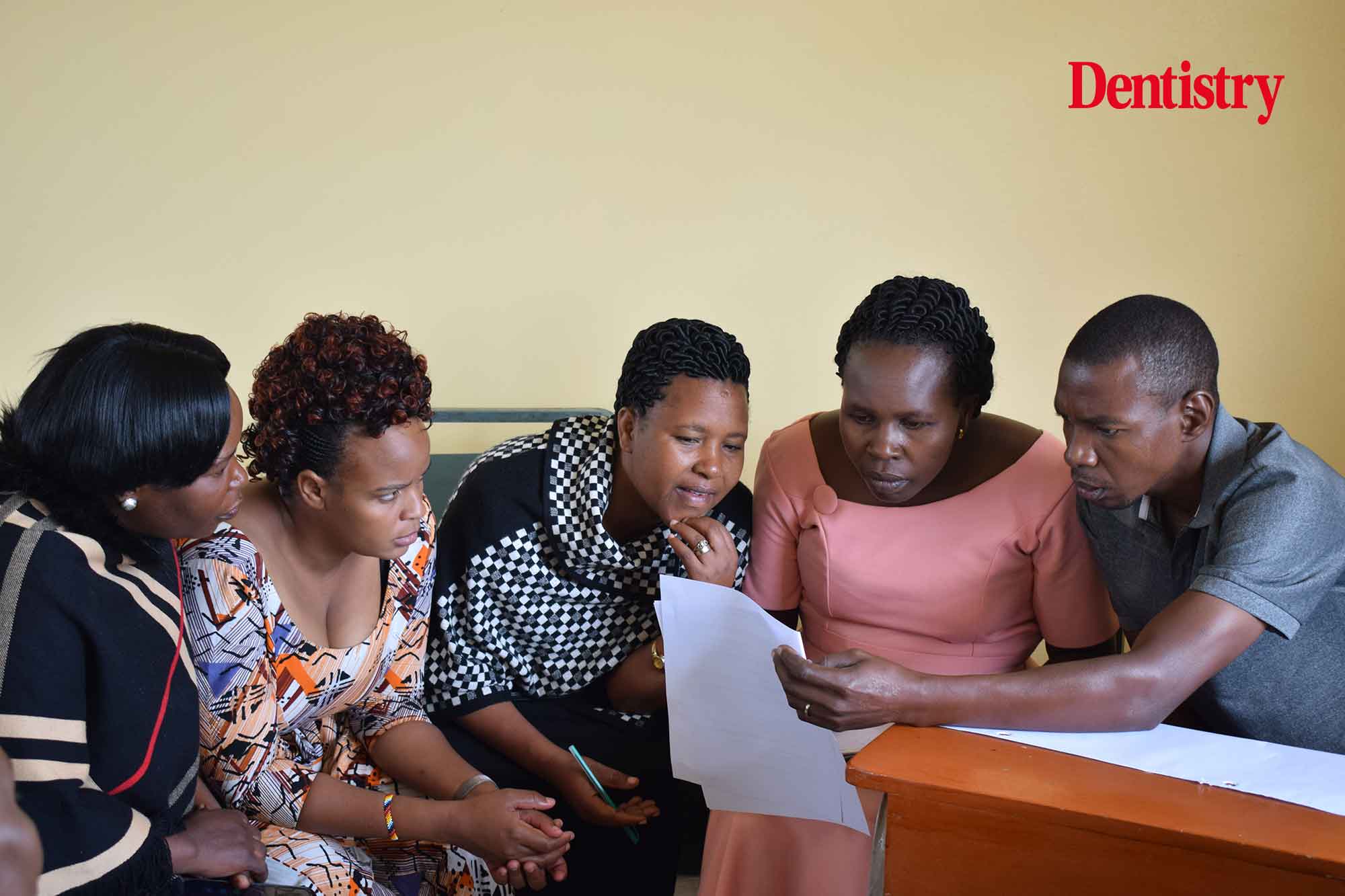 Paul Tasman explores the common practice of removing ‘plastic teeth’ and re-educating communities in Tanzania.
Paul Tasman explores the common practice of removing ‘plastic teeth’ and re-educating communities in Tanzania.
In rural Tanzania education around oral health is extremely limited.
Many communities believe that ‘tooth worms’ are responsible for causing dental caries. When removing a tooth the worm flees to another tooth and continues making new cavities.
For people who believe that ‘tooth worms’ are the cause of dental decay toothbrushing is pointless! They believe that the only reason to brush your teeth is so your breath smells fresh.
We hear a lot about traditional practices, folk medicine and faith healers in African nations. Often we portray the techniques they use as cruel or malicious.
But in communities where people have little affordable access to healthcare, and community education is minimal – where should local people turn for help?
Traditional healers are responding to a void. They give people answers and hope of a cure that is affordable.
To change community behaviour, and so significantly impact oral health, we need to ‘bust’ some common harmful myths and replace them with simple medical facts, and easy preventative behaviours.
The only people who can do this effectively are Tanzanian health workers and respected member of local communities. They understand the context, the community and the myths.
Plastic teeth
Bridge2aid has been working on a big education and ‘myth busting’ pilot project this month.
We’ve developed training with Dr Nila Jackson (a local dentist in northern Tanzania) and the Global Child Dental Fund, to address a very damaging practice that is carried out across much of east Africa.
This practice is infant oral mutilation (IOM). This happens when a very young child goes to a local healer with sickness and diarrhoea. If the healer can feel the ‘tooth buds’ of the emerging canines through the child’s gums, then they may diagnose these as ‘plastic teeth’.
To prevent the illness getting worse, local healer believe the ‘plastic teeth’ need removing.
The local healer uses very basic tools, usually a sharpened bicycle spoke. Using this unsterilised tool, with no efficient way to stop any bleeding, and no form of anaesthetic, the tooth buds are taken out.
This is painful, dangerous, and sometimes deadly. Often the health worker will remove both the infant tooth buds and the tooth buds that will develop into adult canines at the same time. So the patient will never have canine teeth.

Educating the local community
I went to Tanzania to see the delivery of the first training programme. Over the course of the training many people shared their stories.
Among them was a woman whose child was treated for ‘plastic teeth’. She said that it was so traumatic that when she gave birth to her second child, she ran away to the region that she was born in.
People in the south of Tanzania don’t share the belief in ‘plastic teeth’. So she ran away there and didn’t return until the child got its full set of infant teeth.
We also met a woman whose child was diagnosed with ‘plastic teeth’ because she was very sickly. The child lost a lot of blood due to the procedure and became so unwell they were hospitalised.
In hospital the child was diagnosed with malaria – which was the original cause of the child’s sickness. The child very nearly died, but fortunately pulled through.
Several women told us of children of theirs who were not so lucky and had tragically died after this treatment. There were also attendees who had no adult canines because of this happening to them as infants.
There were traditional treatments for polio and HIV/AIDS before intensive community education took place. And easily accessible medical treatments were available.
Now, nobody would go to a traditional healer for these conditions.
We wanted to embed knowledge about the truth of ‘plastic teeth’ at a community level. So a child never has to undergo this dangerous treatment in the future.
Moving to easily accessible locations, and hiring a local school classroom for the day, we trained nearly 500 people.
Debunking myths
We delivered our training over seven days at the beginning of this month (February 2022). The work focused on six wards in the Mara district of Tanzania.
The trainees were different groups of people who are influential in the community. These include the traditional healers who are currently practising this treatment.
We began by training the district health management team and district dental officers. Then the primary healthcare workers (nurses and clinical officers), community education teams, ward development committee members, religious, village leaders and traditional healers.
Training was delivered in Swahili using local facilitators Dr Nila Jackson (a dentist), Dr Alex Kanoni (a dental therapist), the local dental therapists, Dr Msafiri Kabulwa from the Ministry of Health, Ghati Samuel (a community development officer) and Julitha Lesha (a local nurse).
Because the trainers understood the local context and the roots and complexities of these myths in the communities, they were able to speak with authority on the subject and engage in some challenging and sensitive discussions.
Each training session was four hours long. So there was plenty of time for members to raise all their concerns and questions.
The thing that stuck with me most was how widespread the belief in ‘plastic teeth’ was. Even among those with medical training, like the nurses and clinical officers.
It was a surprise for many people describing the act as a violation of the children’s human rights – because it is violence against them.
The sessions shock and upset quite a few of the traditional healers. Their reaction was generally one of a realisation that this was a practice that has to stop.
Saving significant numbers of children
Sharing the science and the biology was really useful. But so was using examples of past myths and ‘busting’ these.
One of our trainees was a man in his mid-40s – he said that he was an identical twin. At the time he and his brother were born, twins were considered ‘bringers of evil’ and had to be taken out of the village and abandoned to die.
His mother managed to save him and his brother. But this was against all the accepted traditional wisdom of the time.
People now know that there is nothing harmful about twins. But just a few decades ago the myth nearly cost him his life.
Our next steps are to see how effective our training was. We carried out pre- and post-training questionnaires with the attendees.
We could see that the training had educated and significantly shifted attitudes. Those attendees who are health workers will also have a three and six-month follow up session carried out by Dr Nila and the district and regional dental officers.
We also carried out wide-ranging surveys on the knowledge and attitudes toward infant oral mutilation in the local community.
In six months’ time a further survey will see if our community educators’ have managed to shift attitudes. We’ll keep you informed as to the progress of the project.
Having the privilege to see some of this training in action I’m certain that we were definitively changing minds. It will spare a significant number of children the pain and danger of this treatment in the future – as a direct result of this training.
By delivering oral health education, we’re delivering pain free futures.
The cost to train each of the attendees in this programme was just £30. If you would like to donate to enable Bridge2aid to run more training like this please click here.


